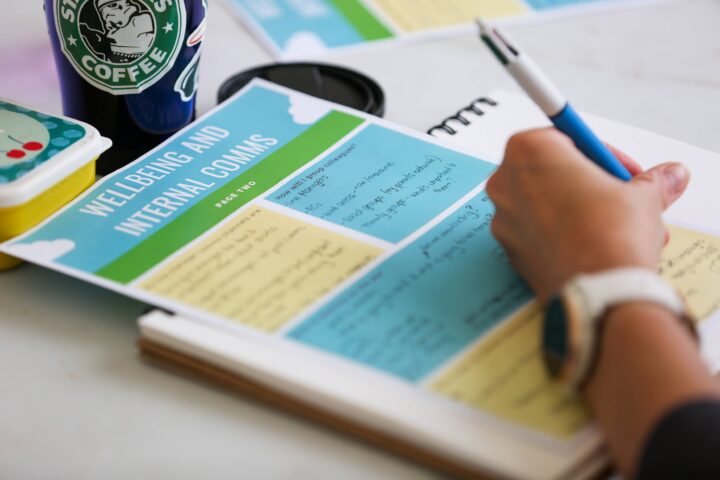
The connection that matters – Comms Unplugged 2021
If you were to ask me to say in one word my experience from Comms Unplugged 2021, it’s connection.
We are connecting with peers, connecting with learning, connecting with nature, connecting with ourselves, and connecting CU21 to our day job. For 2021, I had the joy of delivering a workshop, bringing together internal communications and wellbeing.

I’ll be honest, running a face-to-face workshop after almost two years at home got to me. The nerves started appearing a few weeks before and even on the day. The what-if questions started going round in my head. I should have reminded myself how friendly and supportive the unplugger community is, and they made the session so enjoyable.
Reflecting on CU21, I wanted to share some of the highlights from the workshop to help you and your internal wellbeing campaigns. Whatever your campaign looks like, remember to be human! Be open, inclusive and authentic. You can click here to download a copy of my worksheet.
Before you even think of the comms
- What’s triggered the campaign – something internally happening or external events, and how might this affect your messaging.
- Find out the long-term strategy – a wellbeing campaign should have your people at heart and not be a tick box exercise.
- Unearth those hidden issues – if issues such as high workloads, increased screen time and change aren’t addressed, you risk your campaign being seen as false
Ways to plan the year ahead
There are many ways to plan your wellbeing campaign, and these are just a couple of ideas to help get you started.
- Themes such as mind, body, finances, and family can be used monthly or quarterly to help plan your content.
- Check your EAP/health provider as they often have their content and events calendar, saving you a lot of work!
- Awareness dates can be planned, but please be careful not to try and do them all. Focus on what is important to your colleagues.
- Employee forums and networks can help give you extra insight on areas of focus and support colleagues need.
Choose your tactics
This list could be endless. I’m sure so here are some communication methods I’ve found to work well when used together in different ways. Don’t forget to think about your different audiences as not everything will be suitable for everyone.
- Leadership can set examples such as taking breaks, keeping on time in meetings and sharing personal tips.
- Consider a light vs heavy method as not every piece of content needs the same impact.
- Create a worry box where colleagues can tell the business what’s on their mind and causing them concern.
- Wellbeing is also about celebrating the good, and this provides a lot of opportunities to embed wellbeing within team celebrations.
- Demonstrations to groups such as managers of products and services such as Employee Assistance Programmes can help highlight what they offer.
- More so than ever, giving colleagues a digital detox by stepping away from screens and tech can be a significant relief.

Don’t forget about measurement. As communicators, we can demonstrate our value even more by showing outcomes rather than outputs. Your occupation health service, EAP provider, and HR team provide a great source of data such as sickness rates and the number of enquires received that you can use to support your measurement.
I’ve also found posting a single question once a quarter asking ‘How confident do you feel talking about wellbeing at work’ on the intranet homepage or social channels can also be a helpful indicator.
Lastly, and perhaps the most important, is to look after you! Part of the reason I enjoy talking on this topic is as a communicator, and I spent a lot of time focused on delivering the content rather than absorbing the advice myself. Make sure occasionally you stop and take in some of the content yourself.
Featured and image above – Richard, Comms Unplugged official photographer.
